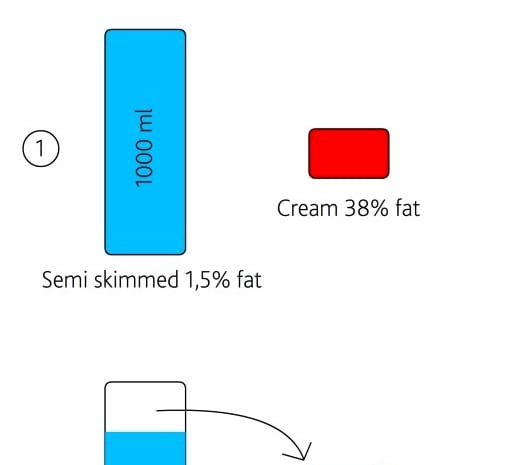We hear the term ‘body’ all the time in the coffee industry. It is one of the core terms used to describe the sensation of a cup of coffee, but why is it nowhere to be found on flavour wheels?
The experience of ‘body’ is always present in a cup of coffee, similar to acidity and bitterness. ‘Body’ is a mouthfeel, which is different from the basic tastes and aromas, hence it is not included on most flavour wheels. Most flavour wheels should perhaps rather be called aroma wheels, since they prioritize olfactory sensory experiences. Let’s take a closer look at how we can understand these concepts.
The scientific approach
In sensory science there is a clear distinction between tastes, aromas and mouthfeel. These are all different sensations, each with its own pathway and mechanism for sensation.
Gustation (sensation of taste) includes only the five basic tastes; sour, sweet, bitter, salt, and umami. In a typical culinary experience this might only account for 20% of the overall flavour.
 Olfaction (sense of smell) includes all the aromas that you perceive when smelling through your nose, or when eating food that allows for retronasal olfaction. Aromas contribute to around 80% of the overall flavour experience, compared to the 20% contribution of tastes.
Olfaction (sense of smell) includes all the aromas that you perceive when smelling through your nose, or when eating food that allows for retronasal olfaction. Aromas contribute to around 80% of the overall flavour experience, compared to the 20% contribution of tastes.
Tip: Experience retronasal olfaction: Pinch your nose and put any type of candy or herb on your tongue. Chew a few times while still pinching your nose. Notice what you taste. Now release your nose and take a couple of deep breaths. You are now getting the full experience by letting air flow from your mouth to nose, allowing the retronasal transfer of aroma compounds from what you ate to the receptors in your nose.
Mouthfeel is a tactile experience, in this case oral-tactile experience. Basically, it is similar to the sense of touch – imagine the feeling of touching a rough as opposed to smooth surface with your fingers. You may get a similar experience when drinking a cup of coffee, only here it might be small particles in the brew that lead to a perhaps more gritty sensation as opposed to smooth. This type of sensation is commonly forgotten when describing flavour, as the focus is always on aromas and perhaps some basic tastes.
The SCA Flavour Wheel
 If we take a look at the SCA Flavour Wheel you will notice that it only has aromas on it, except for a few acids. Considering the diversity in aromas as opposed to tastes, it makes sense that the wheel looks the way it does. A trained ‘taster’ can differentiate more than 10.000 different aromas, while the sense of taste still only includes the basic tastes. The diversity in aromas is thus much larger, and the notion flavour wheel naturally focuses more on aromas according to the 80-20% logic from above.
If we take a look at the SCA Flavour Wheel you will notice that it only has aromas on it, except for a few acids. Considering the diversity in aromas as opposed to tastes, it makes sense that the wheel looks the way it does. A trained ‘taster’ can differentiate more than 10.000 different aromas, while the sense of taste still only includes the basic tastes. The diversity in aromas is thus much larger, and the notion flavour wheel naturally focuses more on aromas according to the 80-20% logic from above.
How could a different flavour wheel look, and where would ‘body’ fit in?
We created a very different type of wheel to illustrate the different contributors to flavour. Only the main categories are presented, and you can easily imagine the possibility of branching out each category, similar to the SCA Flavour Wheel. For example, different types of nuts contributing to the nutty category, or different types of acids contributing to the sour category.
The same principle is used to illustrate ‘body’ as a subcategory of mouthfeel. There are other types of mouthfeel that could be useful when describing coffee, and ‘body’ is just one of them. On this illustration it is defined by its subcategories of viscosity, weight and fullness.

Conclusion
All in all, flavour wheels tend to focus solely on the aromas, and forget about the role of tastes and mouthfeel. We need to remember that flavour is not just aromas, but a combination of a range of sensory experiences. The CoffeeMind Flavour Wheel may be a useful tool in understanding the foundation of what flavour really is. It will always be a combination of tastes, aromas and mouthfeel. Mouthfeel, including ‘body’ in coffee, certainly has its place as a contributor to overall flavour impressions, however the relative contribution of mouthfeel may be smaller or less interesting to the majority of people.
TL:DR
- Flavour wheels focus on aromas
- Flavour, in a scientific sense, is made up of aromas, tastes, mouthfeel (and more…)
- Mouthfeel of foods and drinks is typically forgotten in discussions
- ‘Body’ is a type of mouthfeel, thus not included on ‘aroma’ wheels.
- The CoffeeMind Flavour wheel may be a useful teaching tool to understand elements of flavour.
References



